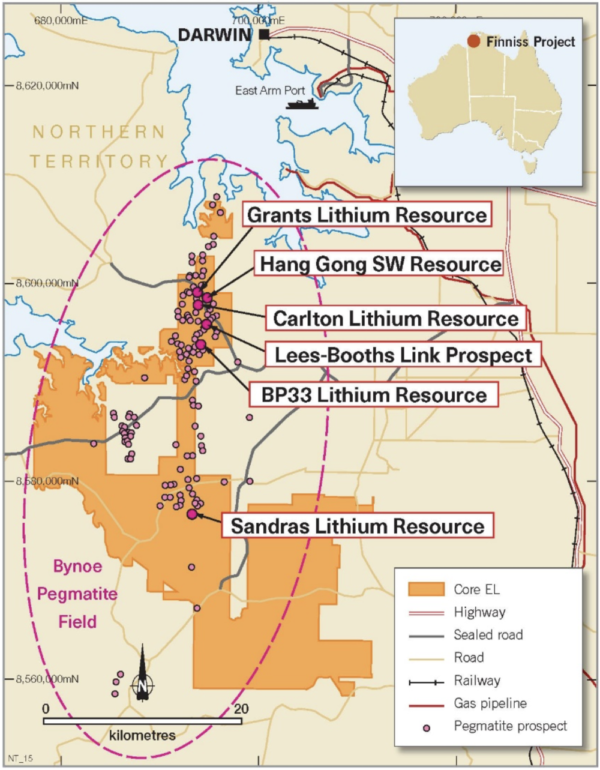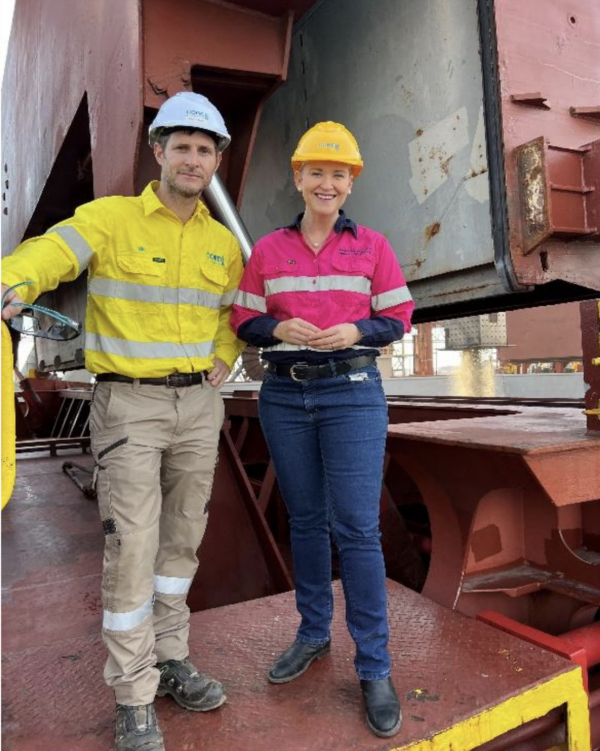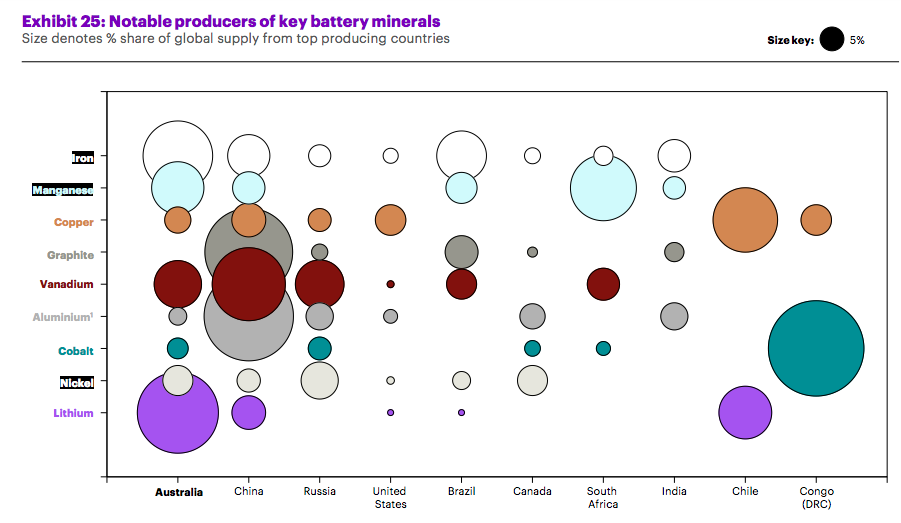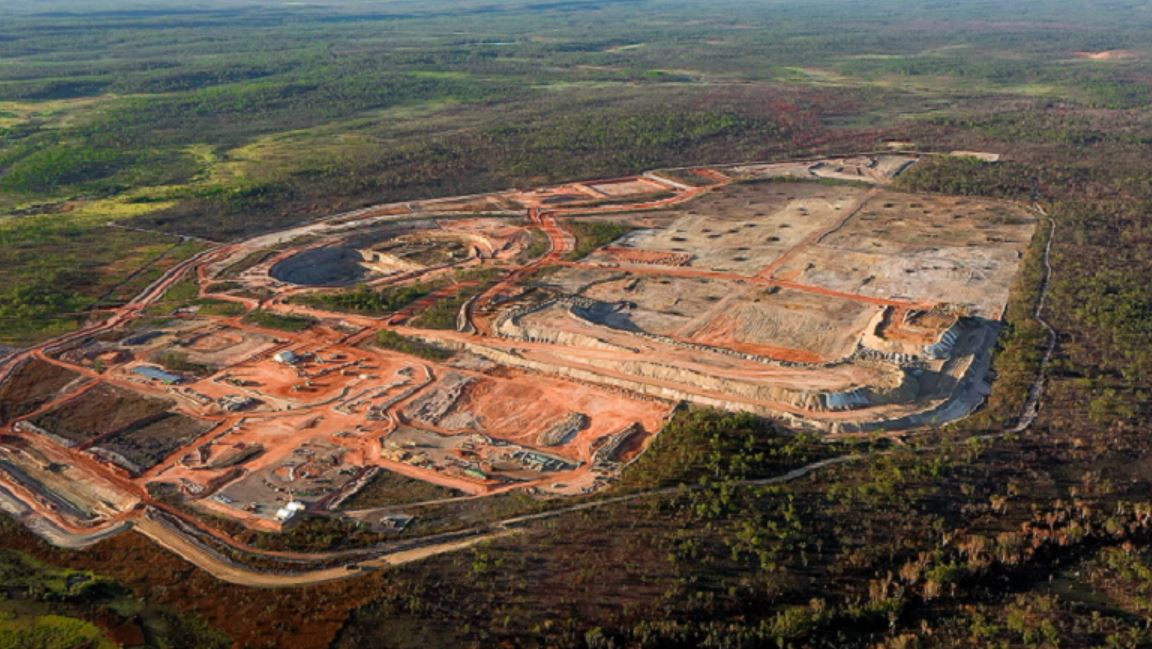Core Lithium opened the Northern Territory’s first lithium mine at the end of 2022 and is now looking to open its second, dubbed the BP33 project.
The ASX-listed company has been granted mining authorisation and had its mine management plan approved by the Northern Territory government, marking the final step in the approvals process ahead of the investment decision from the Core Lithium board.
When Core Lithium opened its Finniss Lithium Project just south of Darwin’s port last October, it had expected its processing facilities at the site to be operational by early 2023. It seems these facilities are slightly delayed, with Core Lithium CEO, Gareth Manderson, saying in a recent statement: “Our focus now is to safely complete commissioning of the Dense Media Separation (DMS) plant at Finniss and ramp up our integrated operation.”

Image: Core Lithium
Once operational, Core Lithium’s concentrator facilities are expected to produce lithium concentrate that will be of “battery-grade” – a high enough quality to be used in electric vehicles (EVs) and the big batteries increasingly deployed to store renewable energy generated throughout the day.
Core Lithium delivered its first cargo of spodumene concentrate, a high-purity lithium ore, from the Finniss project last week. Deputy Chief Minister and Minister for Mining and Industry, Nicole Manison attended the milestone at the Darwin Port, where she also announced the granting of the mining authorisation for BP33.
The new BP33 project, the company says, will be located “within trucking distance” of its existing open pit lithium mine, crusher and processing plant – which is just 5 kilometres away.

Mike Stone, Chief Operating Officer at Core Lithium
celebrating the loading of first concentrate at the
Darwin Port in May 2023.
Image: Core Lithium
Lithium’s direction in Australia
To date, Western Australia has supplied the majority of the world’s lithium, but with demand soaring and growing momentum around making Australia a global battery materials hub, projects across the continent have picked up a new sense of urgency.
Core Lithium’s Finniss project is Australia’s first lithium mine outside of Western Australia and its opening came just one year after construction began. The company has been granted tenements – effectively a claim, lease or licence to the area – for massive tracts sitting in total at 500 square kilometres and situated in what the company describes as “one of the most prospective areas for lithium in the NT,” the Bynoe Pegmatite Field.

Image: Future Battery Industries Cooperative Research Centre
Lithium mining and minerals processing have long been contentious though, criticised for its hefty environmental impacts. Given Australia has among the world’s largest lithium deposits, and lithium batteries remain the primary storage chemistry used today, it seems fairly likely lithium projects in Australia will grow considerably.
With Australia already the world’s largest lithium supplier, both governments and industry appear to be putting increasing emphasis on moving beyond our global “quarry” status to establish more battery material processing facilities onshore to capture the full value chain of the expanding industry.
Members of the Northern Territory government have previously described the Finniss Lithium Project as “just the beginning.”
This content is protected by copyright and may not be reused. If you want to cooperate with us and would like to reuse some of our content, please contact: editors@pv-magazine.com.









1 comment
By submitting this form you agree to pv magazine using your data for the purposes of publishing your comment.
Your personal data will only be disclosed or otherwise transmitted to third parties for the purposes of spam filtering or if this is necessary for technical maintenance of the website. Any other transfer to third parties will not take place unless this is justified on the basis of applicable data protection regulations or if pv magazine is legally obliged to do so.
You may revoke this consent at any time with effect for the future, in which case your personal data will be deleted immediately. Otherwise, your data will be deleted if pv magazine has processed your request or the purpose of data storage is fulfilled.
Further information on data privacy can be found in our Data Protection Policy.